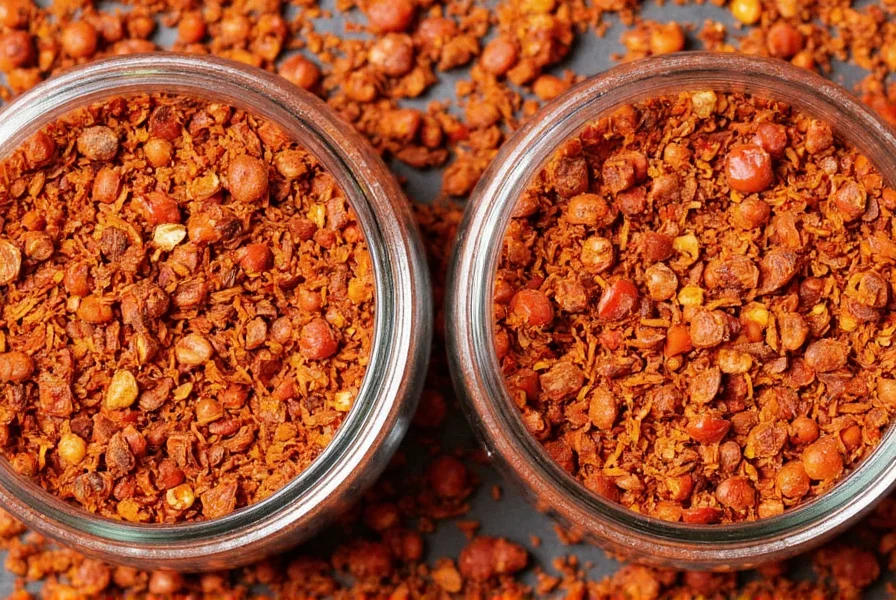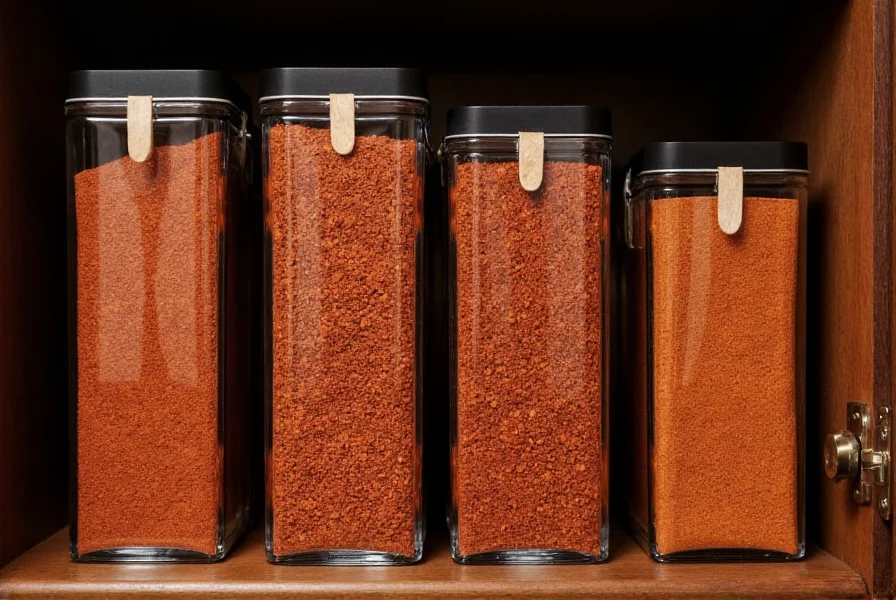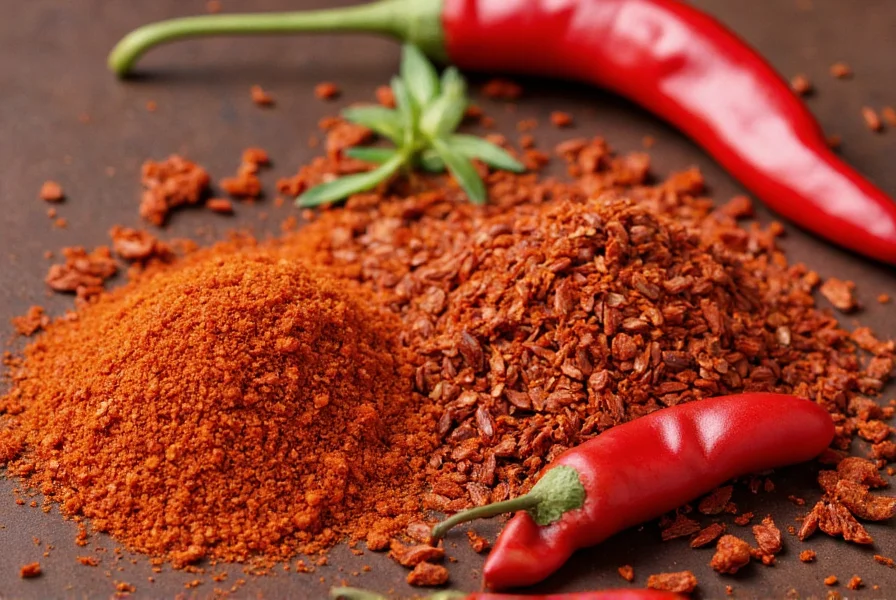When you're standing in the spice aisle staring at bottles labeled both chili flakes and red pepper flakes, it's natural to wonder if there's a meaningful difference. For most home cooks in the United States, the answer is straightforward: these terms describe the identical product—crushed dried cayenne peppers. Understanding this simple fact prevents unnecessary confusion when following recipes or stocking your pantry.
What Exactly Are Chili Flakes and Red Pepper Flakes?
Both terms refer to dried, crushed peppers that typically come from the cayenne pepper family (Capsicum annuum). The resulting product consists of irregularly shaped flakes ranging from deep red to burgundy in color. These flakes contain a mixture of pepper flesh, seeds, and membrane—the parts responsible for both flavor and heat.
Historical Evolution and Industry Standards
The terminology divergence stems from distinct historical trajectories. Etymological records from Merriam-Webster show "red pepper" entered English in 1597, while "chili" (referring to the pepper) first appeared in 1850. In early American cooking, crushed peppers were generically called "red pepper" without form specification. The term "red pepper flakes" gained standardization during the mid-20th century Italian-American culinary boom, particularly for pizza and pasta applications.
Conversely, "chili flakes" emerged prominently in the 1970s with rising global cuisine interest. This term remains prevalent in international markets and recipe literature but lacks consistent standardization. Crucially, the American Spice Trade Association (ASTA) formalized commercial expectations through Standard 31 for Crushed Red Pepper, which mandates products labeled as such must consist exclusively of dried Capsicum annuum peppers meeting specific quality parameters. This regulatory framework creates a critical context boundary: "red pepper flakes" denotes a standardized single-ingredient product in U.S. commercial settings, while "chili flakes" may indicate variable formulations internationally.
| Characteristic | Chili Flakes | Red Pepper Flakes |
|---|---|---|
| Primary Pepper Used | Cayenne | Cayenne |
| Heat Level (Scoville) | 30,000-50,000 SHU | 30,000-50,000 SHU |
| Common Ingredients | Dried cayenne peppers | Dried cayenne peppers |
| Typical Labeling Region | Recipe books, international markets | U.S. grocery stores |
| Flavor Profile | Earthy, slightly smoky, moderately hot | Earthy, slightly smoky, moderately hot |
Subtle Variations You Might Encounter
While the terms are functionally synonymous in most contexts, three potential variations might explain why some cooks perceive differences:
- Regional formulations: In certain regions, "chili flakes" might refer to flakes made from different pepper varieties like guajillo or ancho, creating a milder, fruitier product compared to standard cayenne-based red pepper flakes.
- Brand-specific blends: Some specialty brands create proprietary blends labeled as "chili flakes" that include additional spices like oregano or garlic, while "red pepper flakes" typically indicates pure crushed pepper per ASTA Standard 31.
- Particle size: Occasionally, "chili flakes" might indicate a coarser grind while "red pepper flakes" suggests a finer consistency, though this distinction rarely holds true across brands.

Practical Cooking Guidance
When following recipes, treat these terms as interchangeable unless the recipe specifically indicates otherwise. Professional chefs and food scientists confirm that for 95% of home cooking applications, swapping one for the other produces indistinguishable results.
Consider these practical substitution guidelines:
- For pizza, pasta, and Mediterranean dishes: Use either term confidently—the slight variations won't affect the final dish
- When precise heat control matters (like in sauces): Start with 3/4 teaspoon and adjust to taste, regardless of which label you're using
- For authentic regional cuisine: Research specific pepper requirements (e.g., authentic Arrabbiata requires calabrian peppers, not standard cayenne)
Storage and Shelf Life Considerations
Both products share identical storage requirements. Keep your crushed pepper in an airtight container away from light and heat. Properly stored, they maintain optimal flavor for 1-2 years, though they remain safe indefinitely. The vibrant red color will gradually fade over time, indicating diminishing potency rather than spoilage.
Freezing provides the best preservation method for long-term storage. Divide your flakes into small portions in freezer bags, removing as much air as possible. Frozen crushed pepper maintains peak quality for up to three years.

Common Misconceptions Clarified
Several persistent myths surround these products. Let's address the most common:
- "Red pepper flakes are hotter": No scientific evidence supports this. Heat level depends on the specific pepper batch and growing conditions, not the labeling.
- "Chili flakes contain multiple pepper types": Unless specified as a blend, both terms refer to single-variety cayenne pepper.
- "One is more authentic than the other": Authenticity depends on the specific cuisine, not the labeling convention.
When Terminology Actually Matters
While generally interchangeable, certain contexts warrant attention to terminology:
- Commercial food production: Strict labeling regulations require products labeled "red pepper flakes" to comply with ASTA Standard 31, whereas "chili flakes" may not have standardized composition.
- International recipes: British recipes using "chilli flakes" might intend a different pepper than American "red pepper flakes".
- Specialty spice blends: Products labeled "chili flakes" might include additional ingredients in certain artisanal brands.
For everyday cooking, however, these distinctions rarely impact your results. The most practical approach involves tasting your flakes before use to gauge their actual heat level, then adjusting quantities accordingly—a technique that serves you better than worrying about labeling semantics.











 浙公网安备
33010002000092号
浙公网安备
33010002000092号 浙B2-20120091-4
浙B2-20120091-4